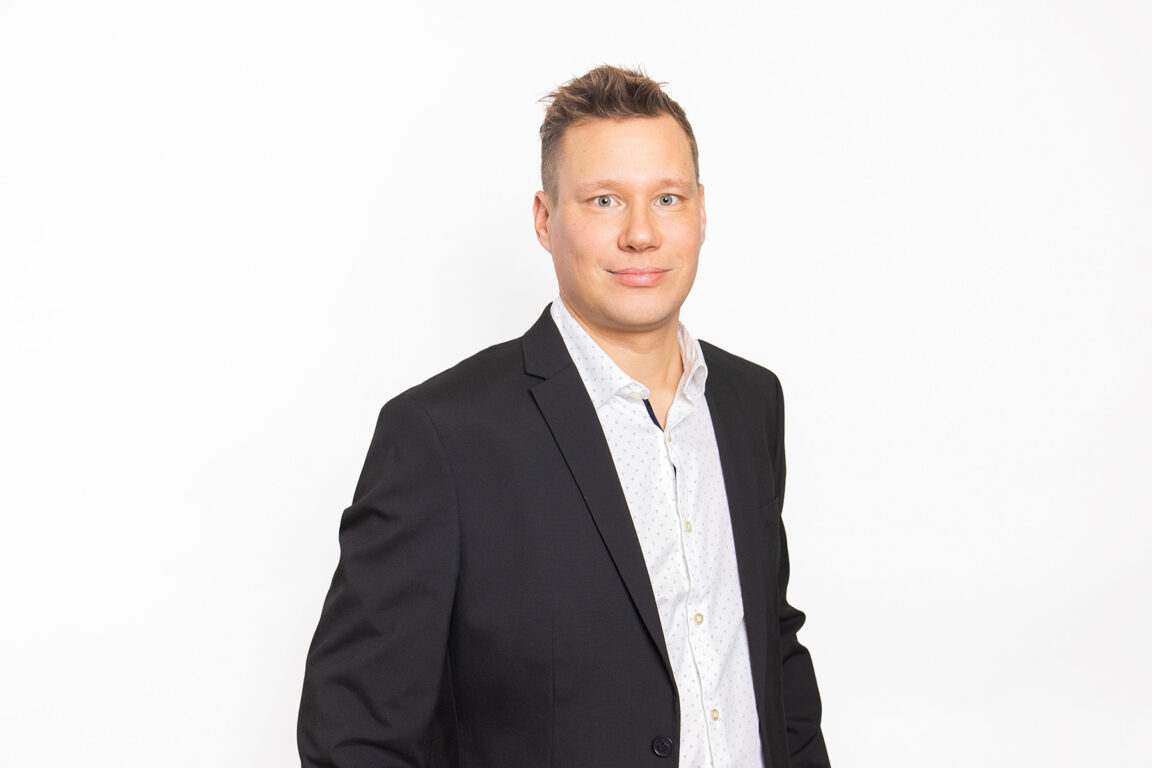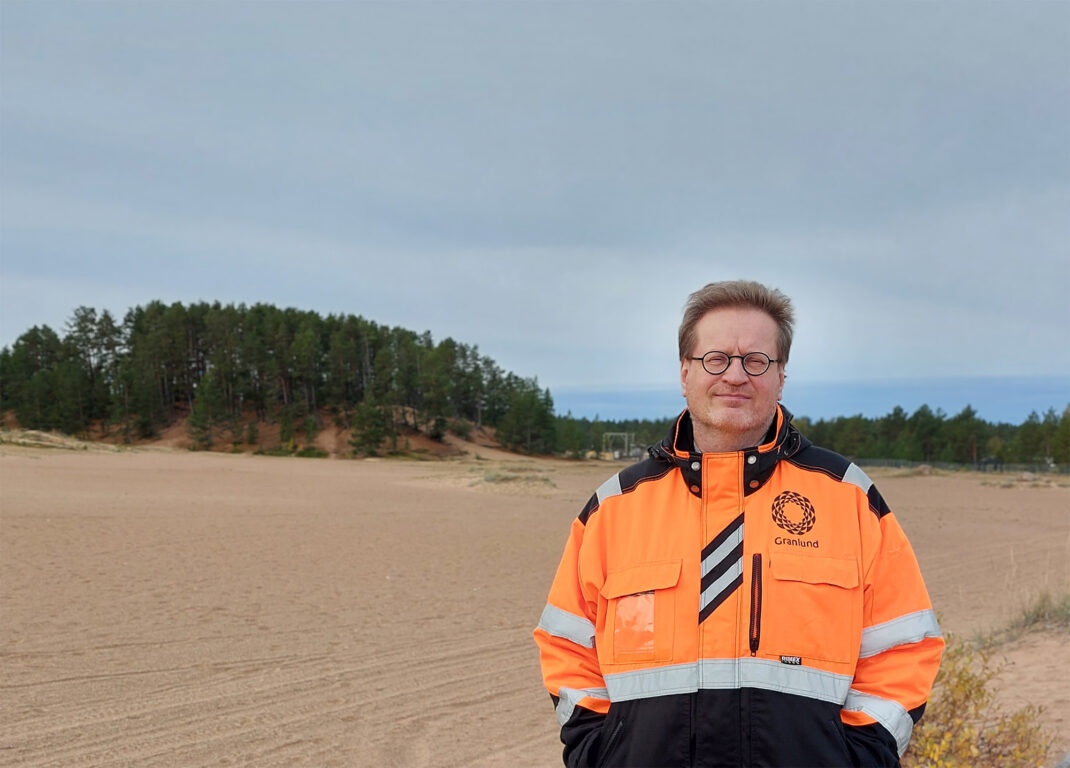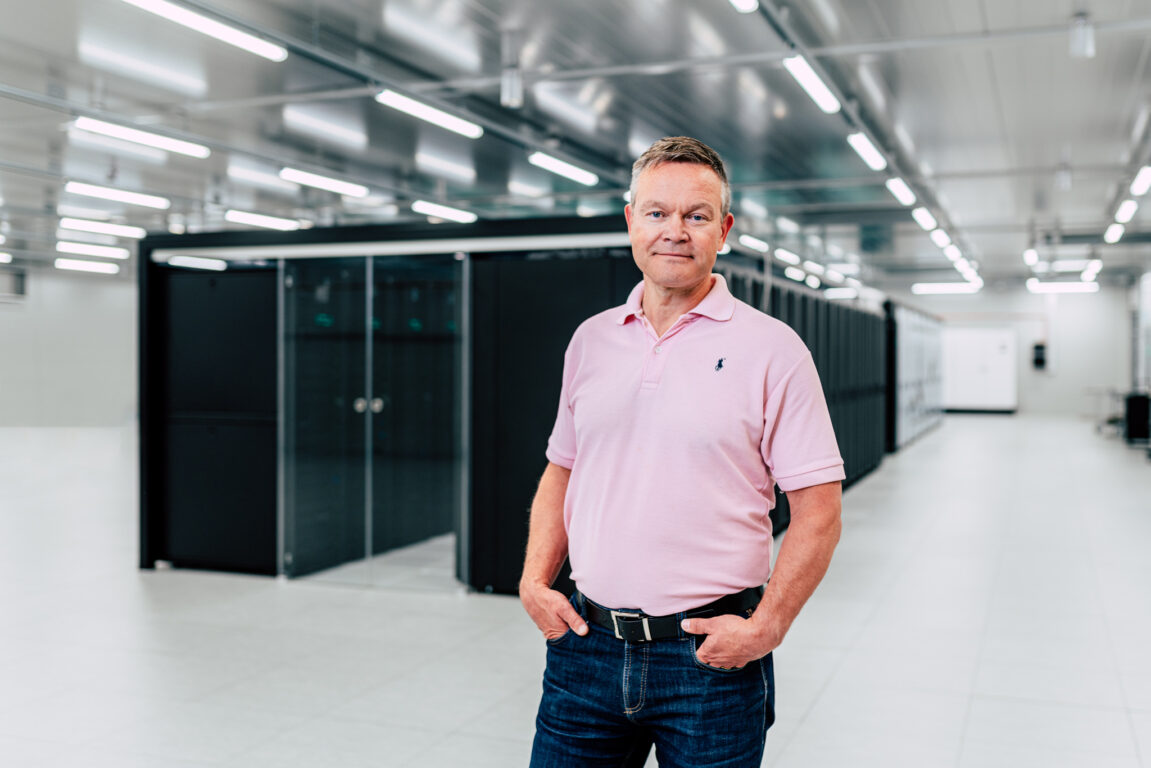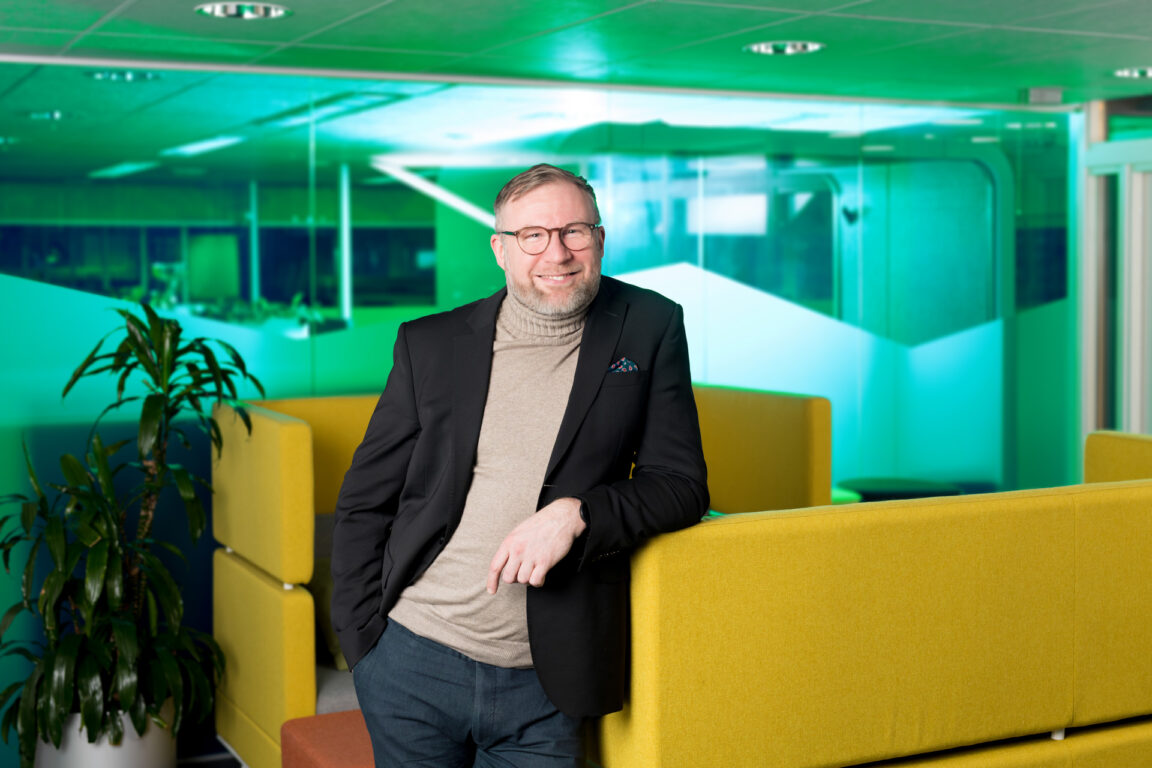
Energy efficiency projects can effectively reduce carbon dioxide emissions by, for example, investing in the recycling of waste heat and on-site renewable energy in real estate. This is why we started calculating our carbon handprint, in other words, the positive environmental impacts of our operations, with the K Group’s energy recycling system, which is our own design.
Buildings use 40% of the total energy consumed in Finland, and real estate also generates 38% of the world’s greenhouse gas emissions. We all need to do our part to achieve the carbon neutrality goal set for the real estate and construction sector by 2035.
When we help our customers reduce their carbon footprint, our carbon handprint grows
When preparing to calculate our handprint, we found that the definition and calculation of the carbon handprint need to be harmonised.
We decided to calculate our carbon handprint using a research-based model developed by the VTT Technical Research Centre of Finland and LUT University.
How was the carbon handprint calculated?
K Group’s energy recycling system, which received Motiva’ Energy Genius of the Year 2019 award, introduces significant savings in heat consumption and electricity. The concept can be duplicated in all K Group properties, which will significantly reduce K Group’s annual carbon dioxide emissions.
Energy efficiency projects are the perfect first target of calculations because, in existing buildings, both the building’s initial energy consumption information for the baseline and the potential energy consumption data according to the project’s energy calculations are available after project implementation for the reference scenario. In these projects, it is also possible to verify the calculation of the handprint after the project on the basis of actual data.
Carbon handprint = carbon footprint of the baseline – carbon footprint of the energy recycling system
The concept is innovative and Granlund has played a significant role in its development, which makes it easy to demonstrate its handprint benefits. The challenge in calculating the carbon handprint was the lifecycle calculation of MEP systems and materials, as the availability of emission factors remains quite poor.
Up to 10,000 tonnes per year
The carbon handprint calculated from forty properties reduces carbon dioxide emissions by a total of 34,500 tCO2e in 20 years.
The projects have been implemented over four years. The annual carbon handprint has ranged from just over six thousand to more than ten thousand tonnes of carbon dioxide equivalents.
For example, the impact of last year’s energy efficiency projects on K Group’s properties amounted to a total of 8,000 tCO2e/20y, corresponding to the annual emissions of nearly 780 Finns. The size of the project’s carbon handprint depends on the type and size of the store.
The carbon handprint of the projects we have calculated is the sum of the lifecycle emission reductions over the next 20 years following the year of implementation. The calculations are limited to cover the purchase energy required for the heating of the property, including lifecycle emissions, the electricity consumption required by the store’s refrigeration machines, heat pumps and other installed equipment with their lifecycle emissions, as well as the lifecycle material emissions of the installed energy recycling system. This limitation was considered to best correspond to the carbon handprint calculation method of the VTT Technical Research Centre of Finland and LUT University.
On what grounds is the handprint calculated in Granlund’s favour?
It is important to note that, in addition to Granlund, other actors have also contributed to the creation of the carbon handprint. In a construction project, the implementation of the solution and, thus, the creation of the handprint is affected by parties such as the developer of the software that calculates the emissions of the materials used, the producers of emission databases, the consultant, the developer, the financier, manufacturers of the low-carbon construction products chosen, various recycling operators as well as the waste management company, design team, contractor and building user.
The calculation model we use does not take a direct position on determining the size or significance of a company’s contribution in the creation of a handprint or on the sharing the handprint when its creation is influenced by several actors. However, in general, a product or service must play a decisive role in generating a reduction in emissions in order for the handprint to be earned.
Insofar as Granlund is clearly behind the innovation that generates the handprint and, thus, the reduction of the customer’s carbon footprint, the emission reduction can be calculated in its entirety in Granlund’s favour according to the model of the VTT Technical Research Centre of Finland and LUT University. Therefore, in energy efficiency projects, the entire reduced carbon footprint can be calculated as Granlund’s carbon handprint, even if other actors have participated in the project.
Future utilisation
Granlund believes that, alongside the carbon footprint approach focusing on negative impacts, we should also introduce a positive approach that makes the potential for improvement visible and encourages companies to tackle global challenges, such as climate change, the water crisis and the loss of biodiversity.
At its best, an open and transparent carbon handprint calculation can serve as a tool for creating added value in customer relationships, as well as a strategic indicator in the company’s internal development. For this reason, we are calculating our carbon handprint in even more projects this year.
Maila Herva ja Linda Pesu
K Group’s energy recycling system
- Reducing the heat consumption of an individual building by up to 85–95%
- Reducing the storekeeper’s electricity bill by up to 10–15%
- Forty K Group properties included in Granlund’s carbon handprint calculations so far
- Energy Genius of the Year 2019
Do you want to hear more?

Maila Herva
Read our blog

AI can revolutionise the built environment, with a little help
09.05.2025 – AI is already beginning to transform the built environment. What is Granlund’s role in this revolution, and what does it…
- Data and digitalisation

How can a construction manager make it easier to implement an international project in Finland?
15.04.2025 – Granlund’s construction management experts help international industrial and data center operators throughout the project, from selecting the location to site…

How can you measure the impacts of construction on biodiversity loss?
18.03.2025 – As much as a third of biodiversity loss is the result of construction. In our pilot project, we tested biodiversity…
- Sustainability

Proactive support for wind farm condition management
12.03.2025 – Wind farms are demanding infrastructures whose preventive maintenance is especially important in the northern conditions. Proactive condition management enables the…
- Innovations

Why ‘Excel-driven management’ fails in real estate capital planning
07.01.2025 – Decentralised systems, outdated data and inadequate cost control are a certain path to exceeding real estate project budgets. How long…
- Data and digitalisation
- Granlund Manager
- Productivity
- Property management

Technology can be the painkiller for your CSRD reporting headache
28.10.2024 – Sustainability professionals: don’t miss this prime opportunity! Use the reporting requirements as your mandate to build your sustainability dashboards and…
- Data and digitalisation
- Sustainability

Five Key Insights into the Future Superblock – Achieving Carbon Neutral Urban Planning
11.06.2024 – Local area energy plans support carbon neutral urban planning. The superblock of the future is built on these principles.
- Energy

Finland and Sweden are the best locations for data centers
06.06.2024 – Of all the countries in the world, the best locations for a data center are Finland and Sweden. We offer…
- Data and digitalisation

Going digital? Don’t forget to update your processes
09.04.2024 – Digitalisation provides an opportunity to introduce new ways of working in the real estate industry. Take these five steps for…

Development of sustainable solutions expands from real estate to city blocks
06.02.2024 – At the moment, all development activities are focused around mitigating climate change. We must find new ways of reducing emissions.
- Data and digitalisation
- Innovations
- Sustainability
